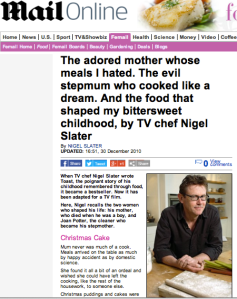Right then guys – this is the question you all need to work on. This is a 16 mark question – spend 5 minutes re-reading the texts and 25 minutes writing your response. You will be asked to compare Source 3 with one of your choice – either 1 or 2. The question is always the same:
Compare the ways in which language is used for effect in the two texts. (16 marks)
The key words in the question are COMPARE, LANGUAGE and EFFECT!
You were all amazing in Thursday’s lesson with your Venn Diagrams and table. In the exam you’ll need to do all of that in the 5 minutes reading time. Simple. You will reread Source 3 – try to identify 4 language techniques plus which perspective it is written in. Use your highlighter here! Then choose the source you will compare – reread and again identify 4 language techniques with your highlighter plus which the perspective it is written in (1st/2nd/3rd). You can draw a mini Venn diagram in the answer booklet just remember to put a line underneath before you start your response.
Your response should be structured in the following paragraphs:
1. Perspective:
Is the article 1st person (I/we), 2nd person (you) or 3rd person (He/She/They/Professor Brown/The giant snails)?
- Source 1 or 2 is written in ….
- This is shown in the quote ….
- This is used because …
- In contrast/similarly
- Source 3 is written in ….
- This is shown in the quote ….
- This is used because …
2. General language comment:
Is the article factual/descriptive/opinionated?
- Source 1/2 uses factual language.
- This can be seen in the use of facts and statistics.
- A quote to demonstrate this is …
- These techniques are used to …
- However Source 3 is descriptive.
- The writer uses techniques such as adjectives and imagery.
- An example of imagery can be seen in the use of the simile …
- An example of an adjective is …
- These are effective because…
3. Zoom in on the language and find a similarity between the sources – this could be anything you feel comfortable writing about:
- Both Source 1/2 and Source 3 use jargon and field specific lexis (fancy way to say words linked to a certain area/field/topic).
- An example from Source 1 is … and an example from Source 3 is ….
- The linguistic technique of jargon is used because …. It is effective as it …
4. Zoom in on the language and find a difference between the sources – this could be anything you feel comfortable writing about:
- Source 1/2 uses …. This is due to the purpose of the article to inform.
- This is demonstrated in the quote …
- This is effective because …
- On the other hand Source 3 uses …. as this text is aimed to describe.
- This is demonstrated in the quote …
- This is effective because …
5. Finish with a summary
- Source 1/2 and 3 are similar because they use ….
- The texts use different language techniques as they have different audiences and purposes. One uses ….. whereas the other uses …..
BOOM – more than 3 marks!
Have a go at comparing the following two texts – you may wish to simply plan your response or you may wish to spend 25 minutes answering the question.
Compare the ways in which language is used for effect in the two texts. (16 marks)
Example Source 1
Example Source 3
Extract from Nigel Slater’s Biography
As per usual happy to read comments/emails. I will also post some ‘Opinion piece’ article for you to have a look at over the weekend.
Just to finish – a short video to watch to recap on this question: Higher Question 4 Recap
Miss O






